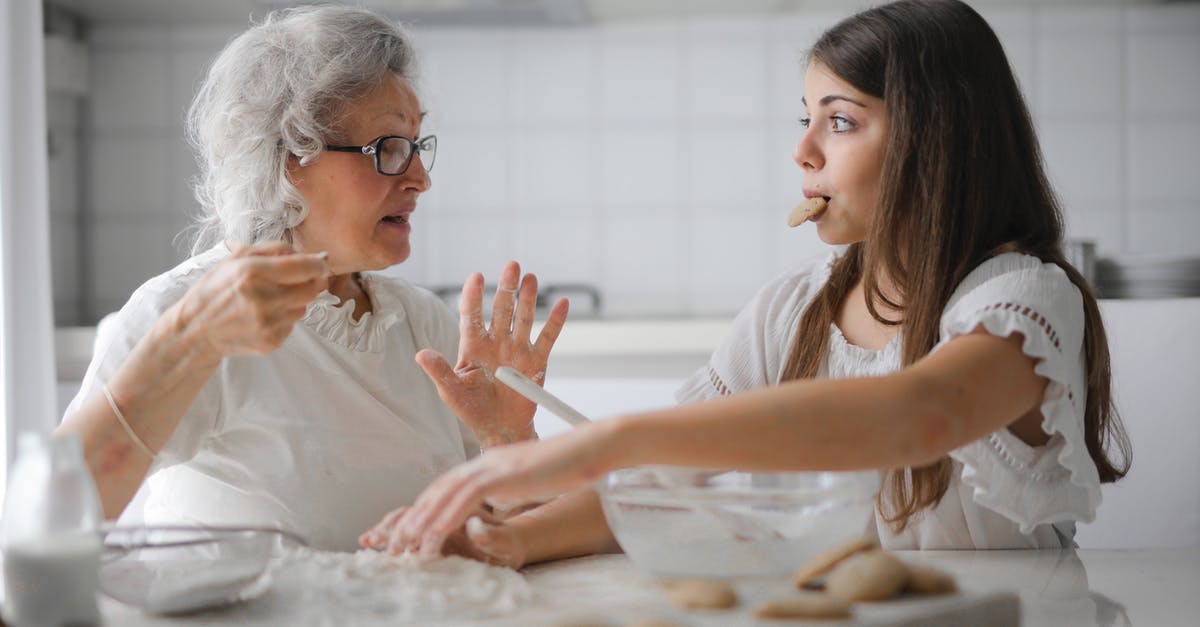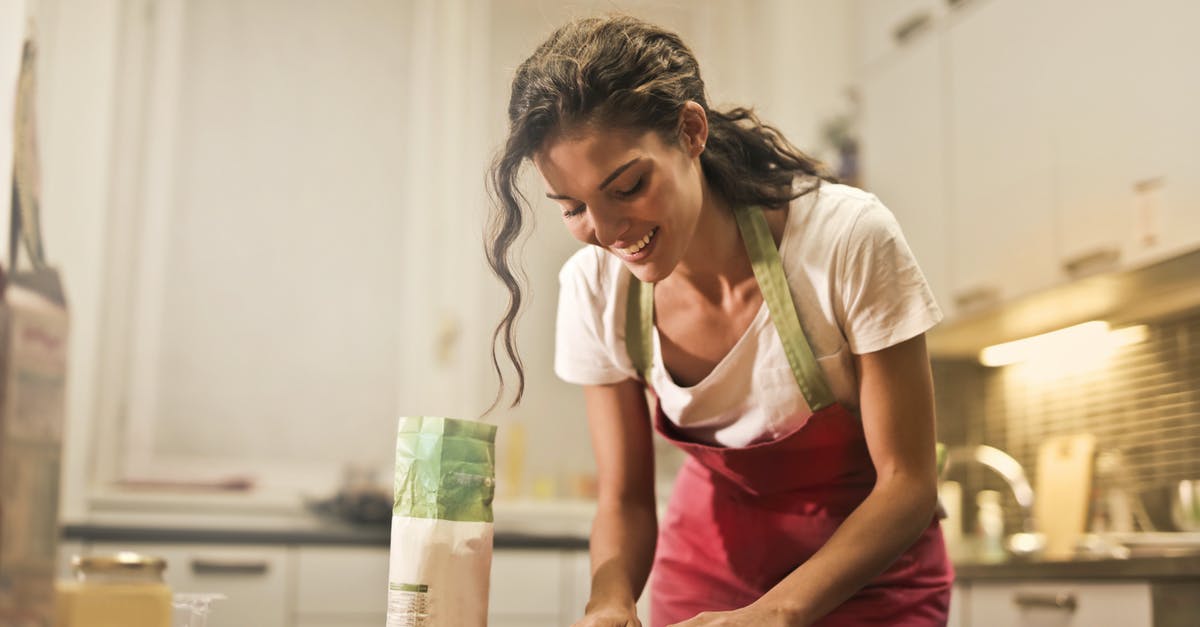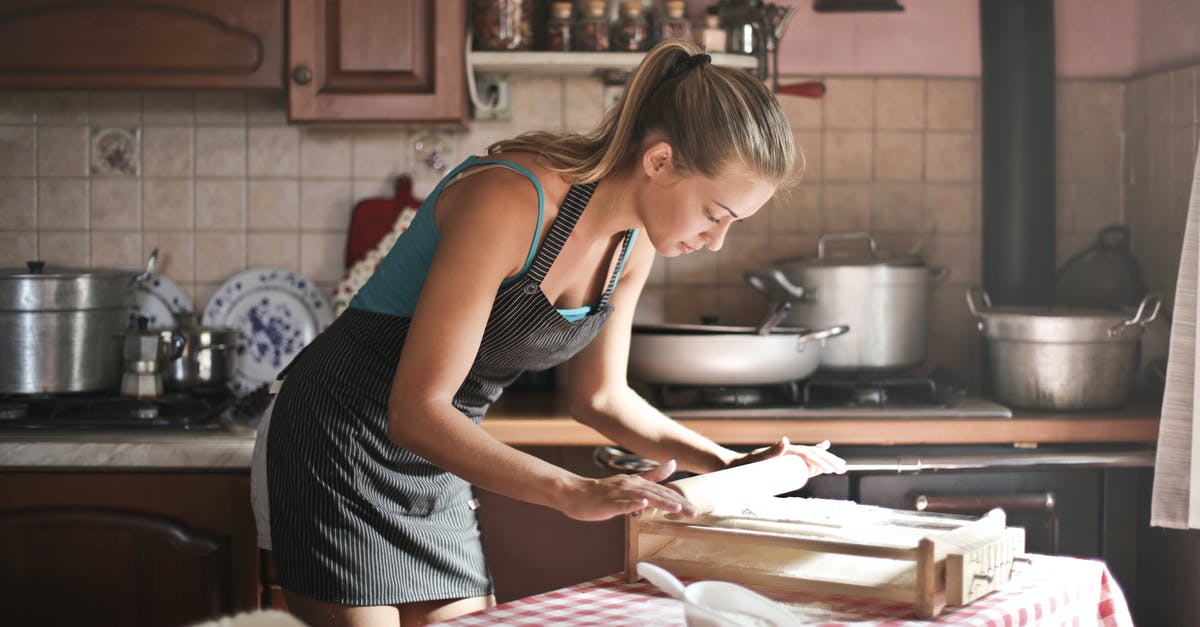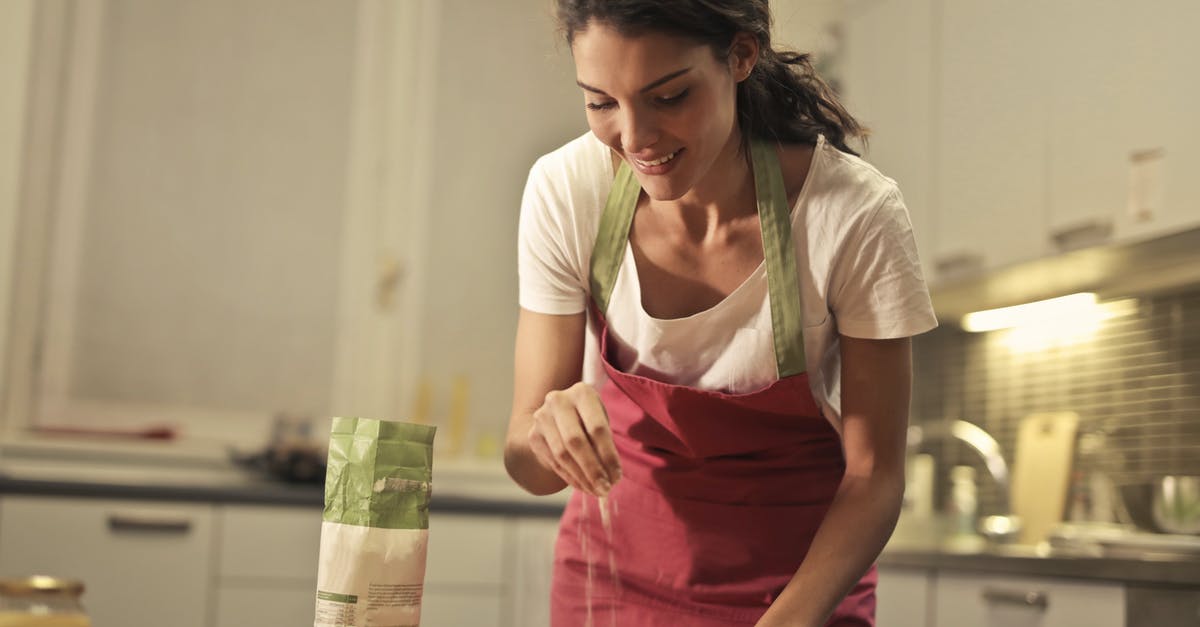Old family recipe has cryptic measurement for flour

My husband's grandmother's recipe card for bread calls for "one half canister of flour".
Does anyone have any ideas on what that might equate to? My brother-in-law has been playing with measurements and all attempts have been undesirable.
Best Answer
Has anyone located Grandma's canister and looked to see if she marked it? It might be that simple. Otherwise... this is a shot in the dark, but without any other clues to go on, I'm going to guess it means 2 1/2 pounds, or 9 to 9 1/2 cups. Typically, flour canisters will hold 5 pounds of flour (a standard bag), with a little headroom. I don't know what kind of bread recipe you're looking at, but if the amount of liquid is in the neighborhood of 2 1/2 to 3 cups, it's probably around 2 1/2 pounds of flour.
I know "around 2 1/2 pounds" and "1/2 canister" sound terribly imprecise, but an experienced baker knows that imprecise measurements are a way of life when it comes to baking bread. Ambient humidity -- as well as the moisture content of flour -- are in a constant state of change. I'm guessing Grandma baked a wonderful loaf of bread, which is why you're trying to duplicate it. She, like any good baker, would have started with slightly less flour than she knew she would need, then gradually added more as she mixed and kneaded it until the dough reached the desired consistency.
You have tried this a few times already, right? I suggest that you simply take what you've learned so far and guess a little low for the volume or weight of flour, mix it thoroughly, then add a bit at a time until you arrive at a workable dough.
Oh -- one more thing: many of us are not perfectly consistent in recording our recipes (especially when using scant, rounded, or heaping measurements). Some improvements we simply remember and don't take the trouble to jot down. Grandma might have left out a detail or two, so don't beat yourself up if your best efforts to follow a recipe don't yield the expected results. With experience, you'll figure out how to make results more to your liking.
Good luck -- and happy baking!
Pictures about "Old family recipe has cryptic measurement for flour"



If there is FLOUR, WATER, SALT at home, EVERYONE CAN MAKE THIS RECIPE EASILY ❗
More answers regarding old family recipe has cryptic measurement for flour
Answer 2
In the book "Ratio" by Michael Ruhlman, a typical flour to liquid ratio for bread is 5:3 by weight, so that would probably be a good starting place. If you provided more information on the rest of the recipe, that would be helpful.
Sources: Stack Exchange - This article follows the attribution requirements of Stack Exchange and is licensed under CC BY-SA 3.0.
Images: Andrea Piacquadio, Andrea Piacquadio, Andrea Piacquadio, Andrea Piacquadio
